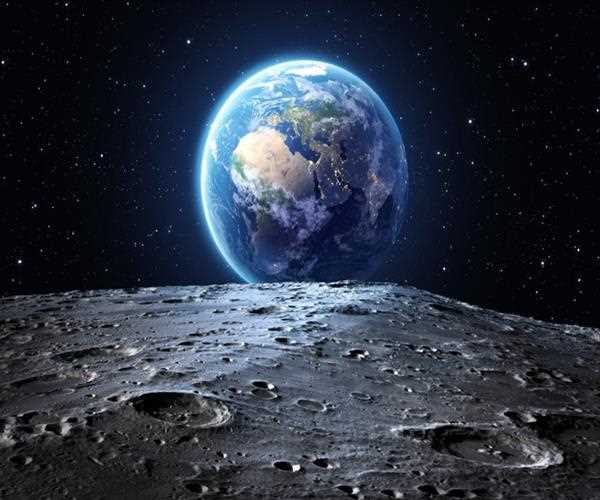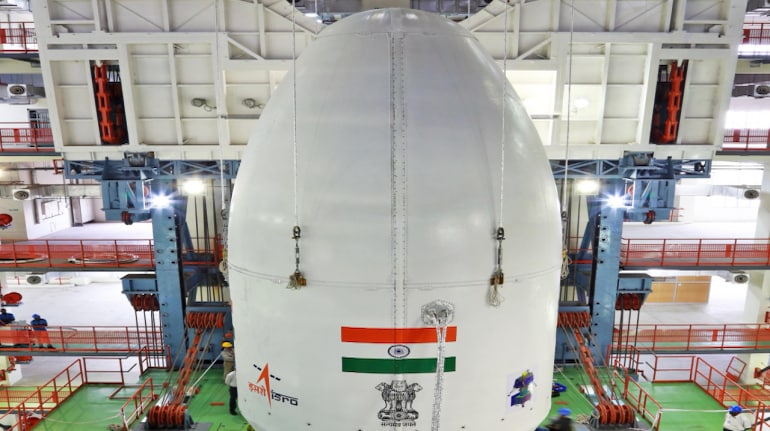Search here

08-Jul-2023 , Updated on 7/8/2023 8:49:59 AM
ISRO to launch moon mission Chandraayan- 3 on July 14
Highlights
- ISRO (Indian Space Research Organisation) is scheduled to launch its third moon mission, Chandrayaan-3, on July 14.
- Chandrayaan-3 is a follow-up mission to the Chandrayaan-2, which aimed to land a rover on the moon's surface but encountered a technical glitch during the final descent.
- The primary objective of Chandrayaan-3 is to conduct a soft landing on the moon's surface and deploy a rover to explore the lunar terrain.
- The mission will be launched using the Geosynchronous Satellite Launch Vehicle Mark III (GSLV Mk III), a powerful launch vehicle developed by ISRO.
- Chandrayaan-3 will carry advanced instruments and equipment to study the moon's topography, mineralogy, elemental abundance, and potential for water and helium-3 resources.
- The mission will also contribute to the understanding of the moon's evolution and its connection to Earth's geological history.
Chandrayaan-3 is part of India's ambitious space exploration program, which aims to enhance scientific knowledge and establish a stronger presence in spac
The Indian Space Research Organisation (ISRO) is all set to embark on its next lunar exploration mission, Chandrayaan-3, with the launch scheduled for July 14. After the success of the Chandrayaan-1 and Chandrayaan-2 missions, this new endeavor aims to further enhance India's capabilities in lunar research and pave the way for future lunar exploration. With Chandrayaan-3, ISRO is poised to make significant advancements in understanding the Moon's composition, geology, and potential resources.
India's space agency has announced that its most recent moon lander mission, Chandrayaan-3, will take off on July 14, almost four years after the failure of its predecessor in 2019.
Chandrayaan-3 is an ambitious project that follows in the footsteps of its predecessors but incorporates valuable lessons learned from previous missions. The primary objective of this mission is to achieve a soft landing on the lunar surface and deploy a rover to conduct scientific experiments. The rover will be equipped with advanced instruments to analyze the Moon's soil and collect data on its mineralogy, elemental composition, and geotechnical characteristics. By doing so, scientists hope to gain deeper insights into the Moon's evolution and its similarities or differences with Earth.
The Indian Space Exploration Association (ISRO) will send off the following Chandrayaan (Sanskrit for "moon vehicle") mission utilizing its Send off Vehicle Imprint III from Satish Dhawan Space Center in South India's Sriharikota island at 2:35 p.m. IST (2:05 a.m. PDT) on July 14, the space organization said in a tweet posted on Thursday. The mission, which will have the codename LVM3 M4, will consist of a lander, propulsion module, and rover. Its goals are to rove the lunar surface, carry out on-site scientific experiments, and land softly and safely.
In August, Chandrayaan-3 will make its landing. India's mission, if it succeeds, will make it the fourth nation to successfully land on the moon, following the United States, China, and the former Soviet Union.
First reported in January 2020, the Chandrayaan-3 mission was at first expected for 2022. The space organization has consolidated discoveries from its past, $140-million moon lander mission, which bombed minutes before an arranged score on the lunar surface in September 2019. It sent off in July of that year, then headed out to the moon during the mediating months.

The lander in the mission will incorporate advances, for example, laser and RF-based altimeters, velocimeters, throttleable fluid motors, danger location and evasion frameworks and an arrival leg system, the space organization said in a nitty gritty note regarding the mission.
ISRO will likewise utilize a laser-prompted breakdown spectroscope and an alpha molecule X-beam spectrometer on the wanderer to do subjective and quantitative essential investigation, and inspect the basic organization of lunar soil and shakes around the arrival site.
India has made significant progress in its space exploration efforts over the past few years. Along with Chandrayaan, ISRO is working on the much-anticipated human space flight mission Gaganyaan, which intends to transport three people to a low-Earth orbit of approximately 250 miles for three days. The country also recently passed its space policy to facilitate collaboration between government agencies, such as ISRO, and space technology startups. In 2024, the $1.8 billion undertaking is anticipated. Last month, India additionally marked NASA's Artemis Accords to team up with the program's partaking nations on space investigation.
Chandrayaan-3 fills in as a replacement to the Chandrayaan-2 mission, with the essential goal of exhibiting start to finish capacities in safe lunar landing and investigation. The mission is furnished with logical instruments intended to concentrate on different parts of the lunar climate, including the thermophysical properties of the lunar regolith, lunar seismicity, lunar surface plasma climate, and natural structure close to the arrival site.
Recently, in Spring, the Chandrayaan-3 space apparatus effectively finished fundamental tests, approving its capacity to endure the difficult vibration and acoustic circumstances experienced during send off. The spacecraft's resilience and preparedness for the challenging lunar mission were demonstrated by this accomplishment.
India's past lunar mission, Chandrayaan-2, sent off on July 22, 2019, from the Satish Dhawan Space Center, Sriharikota. Sadly, the Vikram lunar lander's failure to successfully land on the Moon's surface led to a crash on September 6 and a setback for the mission.
As the countdown to the launch of Chandrayaan-3 begins, anticipation and excitement are building within the scientific community and the general public alike. The mission holds the promise of unraveling new mysteries, expanding our knowledge of the Moon, and inspiring future generations of scientists and engineers. It serves as a reminder of the power of human curiosity and the relentless pursuit of knowledge.
In conclusion, the upcoming launch of Chandrayaan-3 by ISRO on July 14 signifies India's commitment to lunar exploration and scientific research. This mission aims to build upon the successes of Chandrayaan-1 and Chandrayaan-2 while incorporating valuable lessons learned. By achieving a successful soft landing and deploying a rover on the lunar surface, Chandrayaan-3 has the potential to unlock new discoveries and contribute to our understanding of the Moon. It also positions India as a key player in space exploration and resource utilization, fostering international collaborations and inspiring future generations of scientists and engineers. As the nation eagerly awaits the launch, the world watches with anticipation to witness the next chapter in India's remarkable space exploration journey.

SEO and Content Writer
I am Drishan vig. I used to write blogs, articles, and stories in a way that entices the audience. I assure you that consistency, style, and tone must be met while writing the content. Working with the clients like bfc, varthana, ITC hotels, indusind, mumpa, mollydolly etc. has made me realized that writing content is not enough but doing seo is the first thing for it.
Join Our Newsletter
Subscribe to our newsletter to receive emails about new views posts, releases and updates.
Copyright 2010 - 2025 MindStick Software Pvt. Ltd. All Rights Reserved Privacy Policy | Terms & Conditions | Cookie Policy